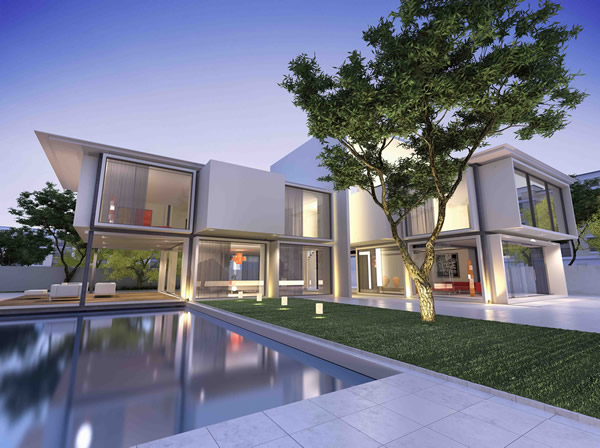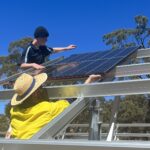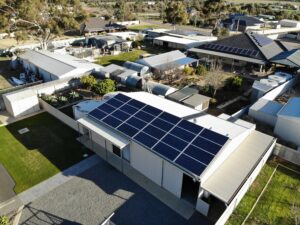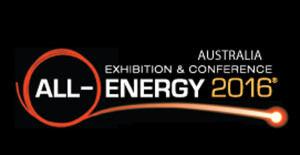
Home > Being Independent > Why Living Off-Grid Doesn’t Mean Compromising Your Lifestyle

When some people think about an off-grid home, they picture a small house in the middle of nowhere with only the absolute basics: simple lighting, a tiny kitchen, and not a dishwasher or air conditioner in sight.
But the reality is, many of today’s off-grid homes are just as comfortable and feature-packed as their mains-powered counterparts.
With solar panels reaching new levels of affordability, the emergence of exciting battery technologies, and increasing demands for sustainability, many people are creating beautiful and efficient homes without mains power.
While living off-grid can require a significant capital outlay, there are substantial cost savings in the long run – as well as the satisfaction of living in a self-sufficient home.
In years gone by, living off-grid meant saying goodbye to many lifestyle aspects that mains-powered homes enjoy. But with continual decreases in solar panel and battery prices – combined with more efficient appliances – many of today’s off-grid homes find a perfect balance between sustainability and comfort.
An off-grid system contains many specialised components, but in simple terms, it consists of a solar panel array, a battery bank to store and supply energy, a solar inverter, a battery inverter, and a generator to provide backup electricity.
The solar array produces electricity during sunlight hours, powering appliances directly and storing excess energy in the batteries. In the evening, or during periods when the home needs more power than solar can provide, the battery system supplies electricity in the same way the grid normally would. Depending on the size of the overall system, a backup generator may also provide additional electricity when required.
Off-grid systems are highly customised based on factors such as your property size, your lifestyle, and your overall budget. With a powerful solar array and generous battery storage, many homes can now achieve self-sufficiency from renewables alone – while others use solar power combined with a backup generator.
If you’re building a new off-grid home, the design of the house will have a substantial bearing on your power consumption.
Many off-grid homes incorporate passive design, which utilises natural energy such as sunlight, wind, and temperature differences to achieve the desired results without using electricity.
The orientation of your home plays a significant role in its ability to heat and cool itself – as well as the performance of your solar array.
Solar panels produce the most energy when facing true north, at a pitch that is best aligned to the angle of the sun. In summer when the sun is very high in the sky, this is a shallow pitch of around 0-10 degrees. In winter, when the sun is much lower in the sky, a pitch of around 40-60 degrees can provide optimum performance.
If you have solar panels installed on adjustable ground-mounted frames, you can manually change the pitch of the panels to best suit the time of year. If your panels are fixed-mounted on a roof or shed, it can be beneficial to install them at a steeper angle to maximise winter production, and sustain more reliable solar generation throughout the whole year.
If your solar panels face true east or west, this can lower your annual performance by up to 20%.
Large windows combined with roof eaves allow more light and heat into the home during winter, while providing valuable shade during summer. Get this right during the design stage, and you’ll be surprised how much it can affect the temperature inside your home.
Making use of natural light – in the form of well-positioned skylights – also reduces the need for indoor lighting and will lower your overall power consumption.
Your choice of building and roof materials should be another primary consideration. Your selections will affect the comfort of your home, and your reliance on electrical heating and cooling.
In a country like Australia, where summer days frequently run into the high 30s and low 40s, building materials with insulating properties are a must for staying cool and keeping energy use down.
Some ways to improve passive cooling include:
Wall and ceiling insulation is a must for all Australian properties and can reduce your heating and cooling costs by up to a staggering 50% per year. With a high grade of quality insulation installed during the building process, your home will stay warmer in winter and cooler in summer. Living in a well-insulated property has also proven to be good for your health.
When you’re producing your own electricity, you also need to make wiser choices about the appliances that consume it.
While this may sound like a compromise, the energy-efficiency of many appliances has vastly improved, maintaining functionality while cutting down on electricity and water consumption.
As detailed on the Department of Energy website, the average breakdown of an Australian household’s power use looks something like this:
The most common household whitegoods include fridges, washing machines, dishwashers, tumble dryers, microwaves, and ovens. To help you compare models and make better purchasing decisions, the Australian government has enacted a 6-star energy rating system on all new appliances. The labels display a score out of 6 to help you compare appliances of the same size (i.e. two fridges of the same capacity) as well as the annual kWh (kilowatt-hour) consumption, based on average use.
While the more efficient brands may come with a higher price tag, the electricity and water savings they deliver – not to mention their longer lifespans – make them perfect for off-grid living.
Some other areas that can make a big difference to your power use include:
When you’re building an off-grid home, you want to be as comfortable as possible without compromising your lifestyle – or your energy use. And by making smart choices with your appliance selections, you’ll enjoy financial and environmental benefits for years to come.
Once your energy-efficient home is set up, you still need to know how to make the best use of your solar energy.
After all, living off-grid isn’t about missing out – it’s about being smarter.
Here are six simple ways to make your electricity go even further:
With smarter living habits, you’ll free up electricity to use in other areas of your home, and can install new appliances without fear of consuming too much power.
Planning a new home – especially a self-powered one – can be a lengthy and complicated process. You’ll need to do research, seek expert advice, and develop a clear vision of what you want your new home to be.
When it comes to securing your electricity needs, Off Grid Energy Australia can work with you to design, install, and maintain a customised solar energy system.
For almost ten years, our award-winning team has worked with clients all over Australia – both designing new solar-powered homes and upgrading existing ones. We also offer expert advice about house design, appliance selections, and the most effective ways to live a self-sustaining lifestyle.
For more information about how we can help you, read more about our off-grid systems or get in touch with a member of our team.




Despite some challenges, it is possible to go off-grid in the suburbs

Off-Grid Energy is proud to have been selected as both an Authorised Reseller and Certified Installer for Tesla, and also been chosen as one of the first Authorised Installers for Redflow’s ZCell.

Some factors can be confidently estimated at the time of quoting, whilst others are subject to change, outside of your and our control. If any of these factors do change…

The 5 key takeaways from the 2016 All Energy Conference and Exhibition in Melbourne
Electrical Contractor Licenses: VIC REC-31913, TAS 15608294, WA EC15901, SA PGE278927, NSW 279181C
We acknowledge the Traditional Owners of Country throughout Australia and recognise their continuing connection to land, waters and culture. We would like to specifically acknowledge the Kaurna, Wathaurong, Wonnarua, Wiradjuri and Boonwurrung people. We pay our respects to their Elders past, present and emerging.